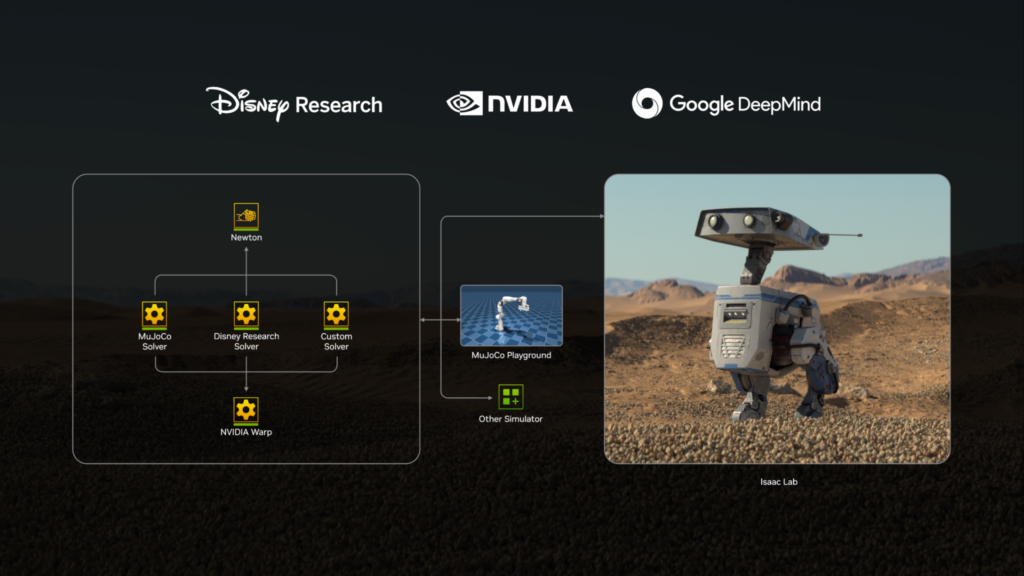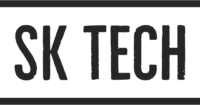
Introduction
Nvidia, a global leader in AI computing and graphics processing, has unveiled a groundbreaking open-source physics engine called Newton. Announced at the Nvidia GTC 2025 conference by CEO Jensen Huang, Newton aims to redefine robotics simulation by providing an advanced and scalable physics-based modeling platform. Developed in collaboration with Google DeepMind and Disney Research, Newton is designed to bridge the gap between simulated and real-world robotic interactions.
With Newton, developers can create highly accurate virtual representations of robotic behavior and physics-based interactions, which are essential for training autonomous systems, optimizing robotic movements, and advancing machine learning models. The physics engine leverages Nvidia’s Warp framework, integrates with existing simulation platforms such as MuJoCo (Multi-Joint dynamics with Contact), and supports differentiable physics for AI-driven optimization.
Background of Robotics Simulation
Before diving into the specifics of Newton, it’s important to understand the role of simulation in robotics development. Robotics simulation is crucial for:
- Testing and validation: Before deploying a physical robot, engineers use simulation environments to test movement, control systems, and obstacle avoidance algorithms.
- Training AI models: Machine learning-based robots require extensive training, which is accelerated using simulations.
- Cost reduction: Physical testing can be expensive, requiring costly prototypes and testing environments. Simulation provides a cost-effective alternative.
- Safety and risk mitigation: Testing in the real world can be risky, especially for high-speed industrial robots or autonomous vehicles. A simulated environment allows for risk-free experimentation.
Traditional physics engines like ODE (Open Dynamics Engine), Bullet, and MuJoCo have been widely used for robotic simulations. However, they often have limitations in scalability, real-world accuracy, or integration with modern AI frameworks. Nvidia Newton is set to address these issues with a scalable, open-source, and highly accurate physics engine.

Key Features of Nvidia Newton
1. Built on Nvidia Warp
Newton is developed on Nvidia Warp, a Python-based framework that provides high-performance parallel computing for physics simulations. Warp enables efficient execution of complex physics calculations across GPUs and CPUs, allowing Newton to run at unprecedented speeds.
2. Differentiable Physics for AI-Driven Optimization
One of Newton’s key innovations is differentiable physics, which enables AI models to compute gradients through simulations. This allows for more efficient learning and optimization in robotics, as AI models can directly analyze and adjust movements based on simulation feedback.
This is particularly useful for reinforcement learning (RL) models, where robots learn through trial and error. By using differentiable physics, Newton helps AI models improve robotic control more quickly and accurately.
3. Seamless Integration with MuJoCo and Other Platforms
Newton is designed to integrate seamlessly with Google DeepMind’s MuJoCo, a popular physics engine used in robotic research. This compatibility allows developers to transition existing projects to Newton without rebuilding their models from scratch.
Additionally, Newton can be used alongside Omniverse, ROS (Robot Operating System), and Isaac Gym, making it a versatile tool for robotics simulation across different ecosystems.
4. High-Fidelity Physics Simulation
Newton provides realistic physics-based interactions by modeling:
- Soft body and rigid body dynamics
- Friction, contact forces, and fluid interactions
- Articulated mechanisms such as robotic arms and humanoid joints
- Collision detection and response
This high level of fidelity ensures that simulations closely mimic real-world conditions, reducing discrepancies between simulated training and real-world deployment.
5. Open-Source and Extensible
Unlike many proprietary physics engines, Newton is open-source, allowing researchers, engineers, and developers to extend and modify it to fit specific needs. This fosters collaboration and innovation in the robotics community.
6. Scalability and Performance Optimization
Thanks to GPU acceleration, Newton supports large-scale simulations with multiple robots in complex environments. This is particularly beneficial for:
- Industrial robotics (optimizing assembly lines and automation systems)
- Autonomous vehicles (simulating urban driving scenarios)
- Human-robot interaction (testing assistive robots and medical devices)
Applications of Nvidia Newton
1. Robotics Research and Development
Newton provides a robust environment for designing and testing new robotic architectures. Engineers can simulate:
- Humanoid robots
- Autonomous drones
- Bipedal and quadrupedal robots
- Industrial manipulators
This accelerates innovation in robotic locomotion, grasping, and manipulation.
2. Autonomous Vehicles and AI Navigation
Newton’s advanced physics modeling allows for realistic simulation of autonomous cars, drones, and delivery robots. By simulating road conditions, weather effects, and pedestrian interactions, Newton helps train AI models for real-world navigation.
3. Healthcare and Assistive Robotics
Newton can simulate medical robots, including surgical robots and robotic prosthetics. By optimizing robotic control for precise movements, Newton aids in developing safer and more effective medical technologies.
4. Gaming and Virtual Reality
Disney Research is leveraging Newton for creating expressive robotic characters. The Star Wars-inspired BDX droids, showcased at the GTC conference, use Newton to achieve realistic and engaging interactions.
5. Industrial Automation and Manufacturing
Newton enables manufacturers to test robotic automation systems for assembly lines, reducing production errors and optimizing efficiency. Companies can simulate warehouse logistics, robotic arms, and conveyor belt systems before deployment.
Newton stands out due to its GPU-accelerated simulations, differentiable physics, and seamless AI integration, making it superior for modern robotics applications.
Future of Nvidia Newton
1. Wider Adoption in AI Research and Academia
Newton’s open-source nature will likely make it a standard tool in AI-driven robotics research. Universities and research institutions will integrate Newton into machine learning and robotic control curricula.
2. Advancements in Real-World AI Training
With Newton’s high-fidelity physics, AI models trained in simulation will translate more effectively to real-world applications. This will accelerate the deployment of AI-powered robots in industries like healthcare, logistics, and autonomous mobility.
3. Further Integration with Nvidia Omniverse and Cloud AI
Newton is expected to integrate deeply with Nvidia Omniverse, a platform for digital twins and AI-driven simulation. Future versions may include cloud-based robotics training, allowing engineers to run massive simulations on Nvidia’s AI supercomputers.
4. Expansion into Consumer Robotics
With advancements in home robotics, Newton could play a role in developing intelligent domestic assistants, robotic pets, and automated kitchen appliances.
Conclusion
Nvidia Newton marks a significant leap forward in robotics simulation, AI training, and physics-based modeling. Its differentiable physics, GPU acceleration, and open-source architecture make it a powerful tool for researchers, engineers, and AI developers.
By enabling high-fidelity, scalable simulations, Newton is set to revolutionize industries ranging from autonomous driving and industrial automation to healthcare and entertainment. As it gains adoption, it will play a crucial role in shaping the next generation of intelligent robotic systems.
For those interested, Nvidia plans to release Newton later this year, offering an exciting new tool for AI-driven robotics innovation.
